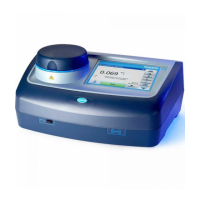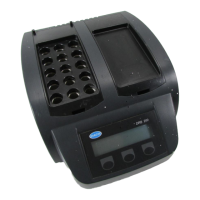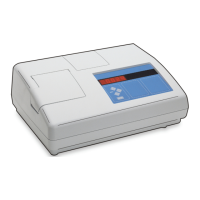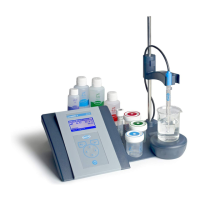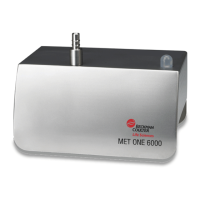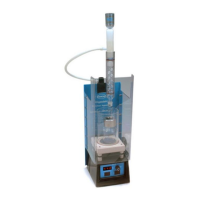1. From the home screen, select the measurement application, then push Select.
Application information shows on the display.
2. Read the related "Application Note" from the USB applications key for more
instructions.
3. If necessary, select an icon for more information or to change some data.
Option Description
Information Shows more information about the application.
Operator Changes the operator ID. Select from a list of applicable operators.
Sample Sample Name: Change the specified name of the sample.
Type: Push the left and right arrow keys and select the sample type (Sample,
QC or Define blank) to be used for the measurement. If Define blank has
been selected before, two more sample types are available (QC with blank
and Sample with blank).
4. Fill a beaker with the recommended sample amount that shows on the display. If
necessary, add more of the solvent specified in the application note until the sensor is
correctly installed in the sample.
5. Carefully put a magnetic stir bar into the beaker. Make sure there is no liquid spill.
6. Attach the beaker to the sensor holder.
7. Make sure that the icon at the bottom of the display is highlighted. Do the
instructions that show on the display adjacent to this icon. Refer to Connect the
sensor on page 15 to make sure that the tubes and sensor are correctly aligned.
8. Push Start to start the measurement. Measurement data shows on the display.
9. If the default stirring speed needs to be adjusted, push the up and down arrow keys
to increase or decrease the speed.
Note: This adjustment only applies to the current operation. The standard default stirring speed
for the application is not changed.
10. Two options are available during the procedure:
Option Description
Stop Aborts the measurement and no results are calculated. If selected during the
Replicate Sample option, then all data in the series is lost.
Skip Stops the current operation and goes directly to the next step in the procedure.
Results are then calculated from measurement data available before Skip is
selected. Results can be less accurate using this option.
11. When the measurement is complete, push the arrow keys to see the different
measurement views.
12. Push Next for these options:
Option Description
Replicate
Sample
Use this option to start the same titration on the same sample. This is used
to study the repeatability by successively analyzing several parts of the
same sample. At the end of each measurement, a window shows the
average value, the standard deviation and the relative standard deviation.
New Sample Use this option to start the same titration on a new sample. No standard
deviation or relative standard deviation measurements will be done.
13. Push Exit to go back to the home screen.
Standard operations
37
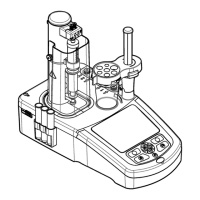
